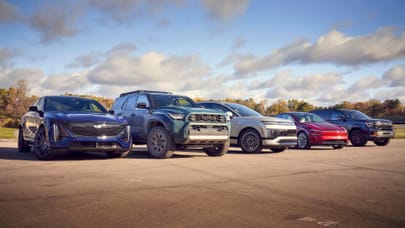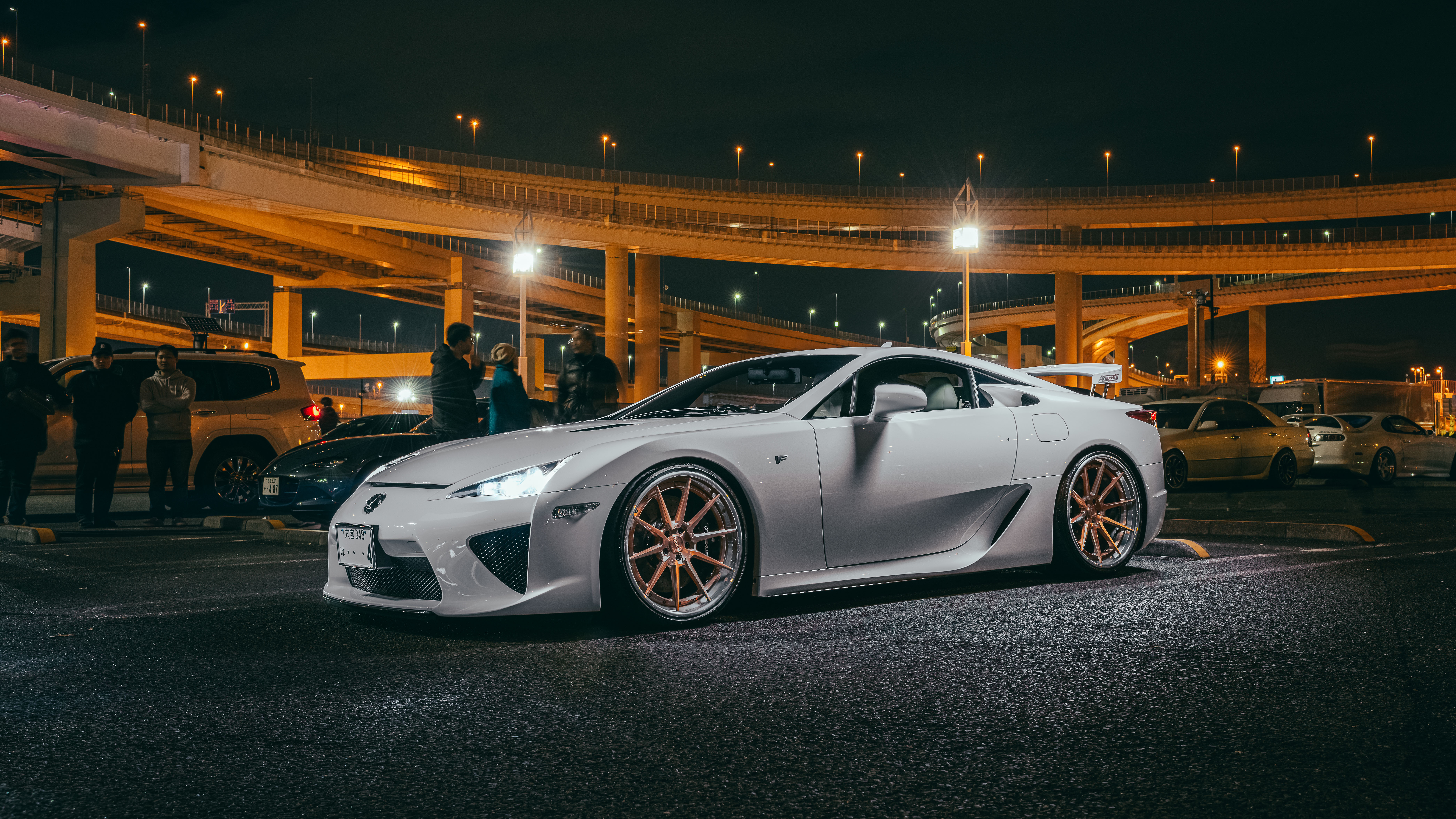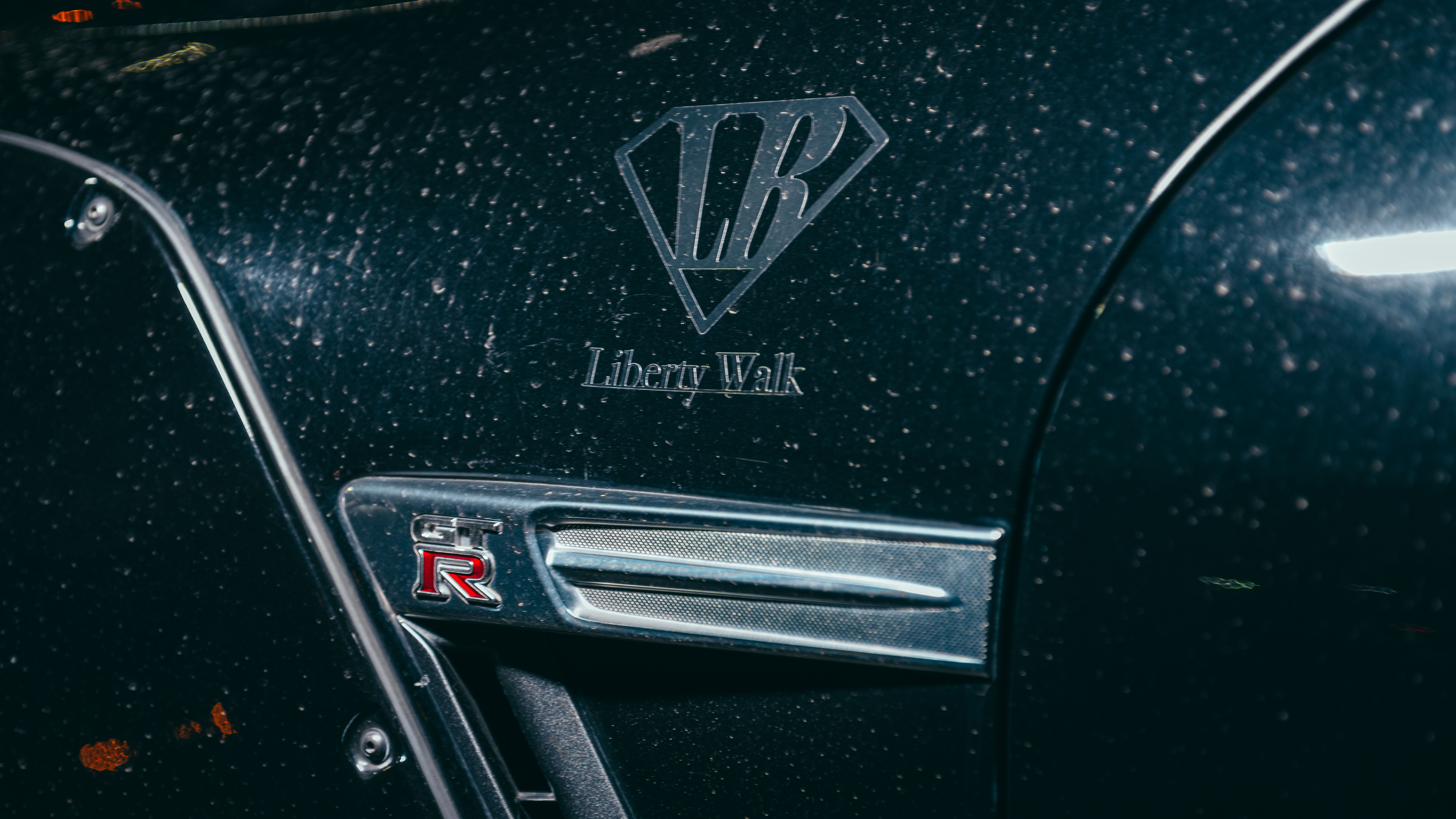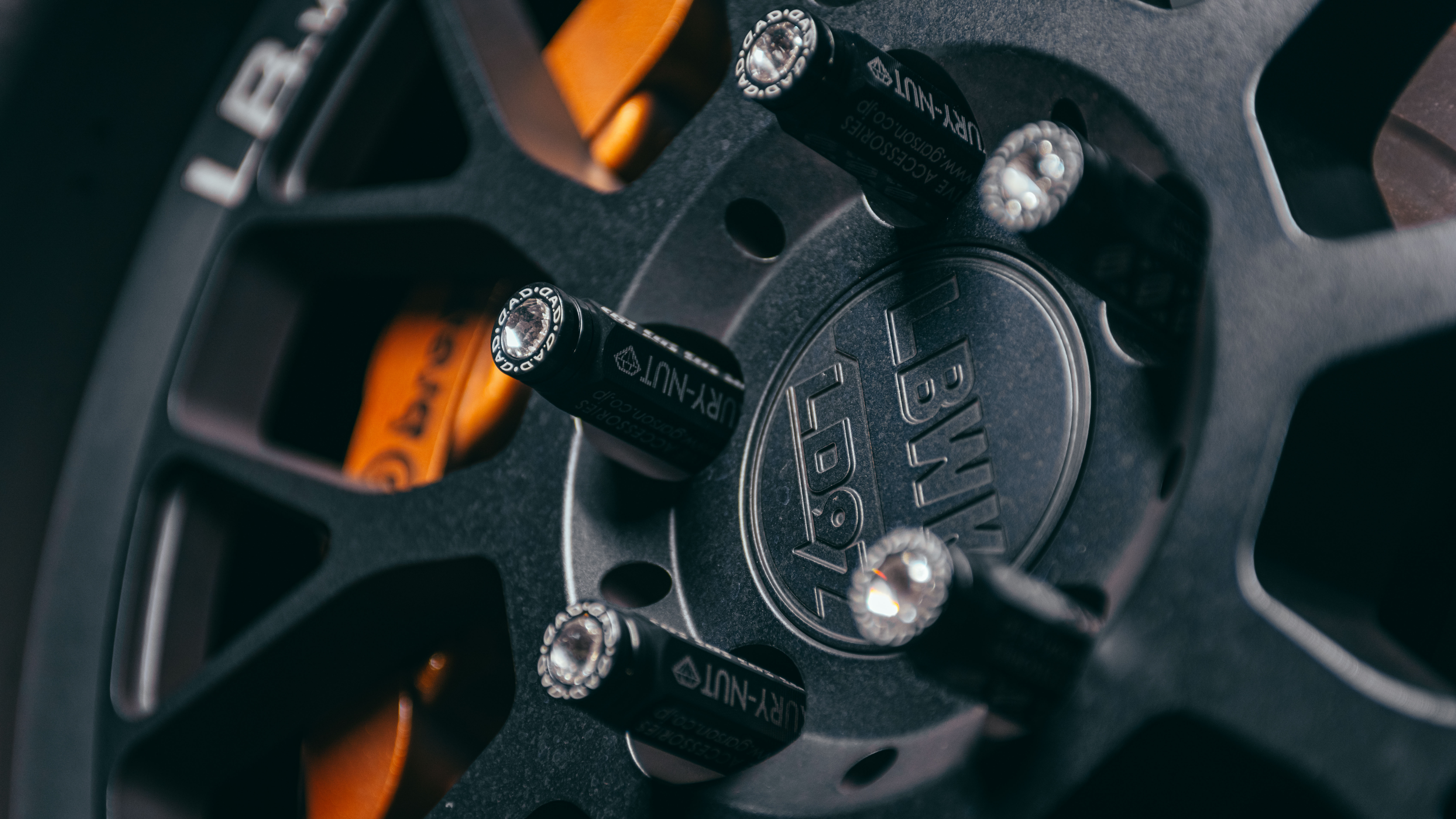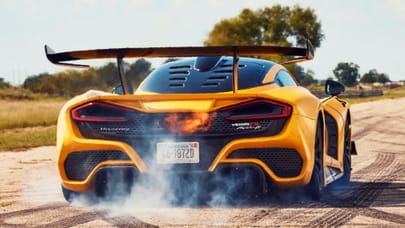
Never meet your heroes? These are the legendary Japanese sports cars inspiring the future
Japan is bringing back its classic sports and supercars as modern EVs. So we thought we'd gather the originals at Tokyo’s Daikoku car park
As cliches go, it’s a good one. A Nismo GT-R cutting through the portside streets of Yokohama in Japan next to the shining mini theme park, the afternoon light spearing through the big wheel trying to pin the spokes to the sea. The brief howl of the V6 across a junction, turbo boost, the scrabble of the all-wheel drive, the vitality and muscle of it. As cures for jet lag go, a few indiscreet button pushes for transmission bias and traction control are enough to wake you very quickly indeed.
The GT-R can’t completely hide its years, mind. It takes a while for the gearbox to wake up and release from Park when you first start it, the throttle generally more elastic in its call and response from the engine than you remember. Boost feels like it takes more time to arrive and there’s no blue pill for an easy fix, the interior verging on the retro. And yet I still love it. It’s all subjective – the GT-R hasn’t got slower... everything else has got faster. Set the modes correctly, get the motor on boost and jam it in the right gear, and the GT-R will still scare the doubt from behind your eyes on a run up the expressway.
Photography: Toby Thyer
Truth is, the Nissan R35 GT-R is still a thing of wonder. This is not the linear, crushing force of electric acceleration, but the noisy, mechanical energy of internal combustion. It might not be the fastest, but for the moment, if you want excitement rather than simply dominance, then ICE still has an edge of imperfect perfection. The reality of the new age of electric is that there are five-seat electric SUVs out there that’d eat the GT-R in a straight drag race and give it an uncomfortable run for its money on a circuit. Which takes a moment to properly sink in. But combustion still has lessons to teach the new generation.
Change is coming, whether we want it or not. But if you want to know where to go, sometimes it’s wise to make sure of where you’ve been. So we’re heading out to meet some real life owners of the cars that inspired the concepts we’ve been looking at, to find out whether there’s kinship, or we’re looking at the last of the breed. We want to find out what the fans are hoping for, and why. There’s only one place to go in Tokyo – we’re headed to Daikoku Parking Area to meet some new friends and see if the future can live up to a glorious past.
Yutaro Kumaki's white Lexus LFA is a vision. Say what you like about the LFA’s relatively modest – by contemporary standards – 522bhp/354lb ft, but a V10 engine that weighs less than a contemporary Lexus 6cyl and revs to 9,000rpm isn’t anything to take lightly. It’s a unicorn of natural aspiration, a legend of internal combustion.
“I bought this car for one reason,” says Yutaro-san, his grin etching itself confidently into the corners of his eyes. “The engine. That’s it. It’s such an emotional thing. There’s nothing quite like it. And an electric car just doesn’t appeal to me – there’s no connection, no soul.”
It’s hard to disagree with the passion, but also wise to note that Yutaro-san is operating at the rarefied end of what constitutes ‘soulful’. His LFA is the kind of car that walks the line between art and science, and even committed electric car enthusiasts would probably give this one a pass. Lexus lost money on every LFA it made and you can see why. Which makes it a bold choice to modify an £800,000 car (original asking price £350k), but this one is done right. And Kumaki-san’s LFA is low and broad, gold aftermarket wheels reflecting the streetlights like bullion teeth in a shark’s smile. Bluntly, it looks stunning. Not svelte or visually light, but filled with sinister purpose. It’s a predator. He thinks the Lexus Electrified Sports Concept looks interesting, but you get the feeling he fell hard for the LFA, and it would take more than a pretty face to turn his head now. And electric – no matter how pretty – doesn’t make the grade.
But the point is made when the car is revved. Pointless, yes, but instructive in this instance.
It sounds like a V10 F1 car. But where the old F1 cars tended to shriek, the LFA builds in a lower baritone. A deeper, more honeyed whoop. The custom titanium exhaust notches up the volume, but the tone is pure LFA. And this is what we’re here for, really: the one thing an electric car can’t do is make the hairs on the back of your neck stand up when someone pointlessly blips the throttle in a car park. But the LFA has a small crowd around it pretty much instantly, and the air fills with murmured oohs and aahs. One man involuntarily breaks out into muted applause, then looks around self-consciously and stops. There’s no wet, gutteral cackle of wasted fuel either – the 5.0-litre V10 wouldn’t be so uncouth – just a clean, crisp arc of revs that dies back as quickly as it arrives, every millilitre of gasoline resolved into noise. Lexus was forced to use a digital rev counter for this car, because a mechanical one simply couldn’t move quickly enough to read idle to 9,000 in 0.6secs. It sounds like the flywheel is made of the idea of metal, the noise so sharp edged, clipped and precise, it almost doesn’t sound mechanical. Hello, irony. If this is the standard, electric still has lessons to learn.
Top Gear
Newsletter
Thank you for subscribing to our newsletter. Look out for your regular round-up of news, reviews and offers in your inbox.
Get all the latest news, reviews and exclusives, direct to your inbox.
It may not be the most expensive, it may not be the most powerful and it might not be the car that draws the crowds, but in some ways, Hulu Marata’s Toyota MR2 is the most charming. It’s a white on white W20 second generation MR2 with the mid-mounted 2.0-litre four-cylinder. And it is bone stock, with the original overcovers for the seats and even a proudly OG brochure. And, like all the best cars, it’s a character in the story of Hulu’s life.
Hulu-san immediately makes me feel old by mentioning that it was his grandfather’s car, passed down to him via his father. He explains his love for its ‘classic’ nature, and his bubbling enthusiasm is absolutely impossible not to love, but worth noting here that this generation of MR2 only stopped production in 1999. Retro maybe, but I can remember when they were new, so my perspective is old man skewed.
But Hulu-san is insistent that the MR2 offers something unique, and he’s right: “It's about the way it drives more than anything else. It feels nimble, and the fact that the engine is in the middle changes everything. It makes it more exciting, less easy. It makes the steering more precise and the handling more challenging, and that’s why I like it. Easy is boring.” But here’s a difference: the engine in the MR2 was never the starring role in the theatre of the experience. It’s not a legendary multi-cylinder, or a raucous rally special – it’s a motor co-opted from the contemporary and famously prosaic Corolla. So what the MR2 offers isn’t based around the characteristics of the engine so much as the fact that it’s just an interesting and unique sensation when you drive it. What Hulu goes on to describe so eloquently isn’t about the drivetrain, it’s about feel. And that’s good news for next-generation drivetrains. Because it suggests that the motivation isn’t everything – if it’s involving enough, then the passion still floats to the surface.
The Nissan Hyper Force's older brother lurks at the top of the car park hidden in the shadows like it’s about to commit a crime. A knuckle-duster of a car, it’s a black on black bally and gloves, Liberty Walk kitted R35 GT-R that’s well used, street dirty and sporting the bumps and bruises of real life. But weirdly, it has the feel of the Hyper Force, a deep sided visual brutality, cartoonish aggression. It’s caricature and exaggeration, but with self awareness. And a hard one to ignore.
The Owner seems genial enough, but had a particular reticence about appearing on camera – presumably because of... things. As for why he bought it, that seems fairly simple: “I liked the way it looked,” he says, shrugging. “And it’s fast. I like fast – I think we all do!” Unsurprisingly, he liked the look of the Hyper Force, a concept that largely apes the Dark Knight aesthetic of his own car. And strangely, you get the impression that for an owner of such an aggressive street car, The Owner isn’t opposed to the idea of an electric powertrain. “There just hasn’t been one that appeals to me enough... yet,” he says with casual magnanimity. “And I’d want more reliable range, but they’re easy fast... and that’s good.”
But again, the one thing that something like the Hyper Force can’t offer is the animation of showing off. The GT-R carries all the visual weight, but when The Owner starts the engine and gives it a few blips, the quartet of mortar sized exhaust pipes sing the song of our people, and The Owner smiles a smile that’s all teeth. He’s making a point. An electric car hasn’t got the aural theatre that provokes memory, doesn’t smell of anything but ozone. Blipping a motor doesn’t buzz the senses except with static – and that’s something that EV drivetrains will have to supplant with something else. What that might be is completely up for grabs.
There's something very neat about an FD RX-7, something pared back and visually calm. Even when this one prowls into Daikoku PA with a large rear wing and aftermarket wheels, there’s a lack of macho provocation that sets it against most performance cars. You want iconic Mazda? This looks just about perfect, right down to its pop-up headlights that feature as vestigial versions on the Iconic SP concept car. There’s also more explicit equivalence with the smoothed form and flow of the design language – Mazda’s newest paying homage to a 30-year-old car. And you don’t need to be a car designer to be able to figure it out.
The owner, Hidehiro Aya, doesn’t need any thinking time when it comes to deciding what makes the RX-7 special. “The rotary. There just isn’t a car that has this kind of engine anywhere else. And that informs everything else – the way it feels, the way it sounds, the experience – it’s what makes it unique.” He goes on to explain why an electric RX-7 wouldn’t – couldn’t – hit the spot in the same way. “It’s about interaction with the machine – the vibration, the noise. I don’t drive this car to be the fastest, but to get... satisfaction. It’s fun in a way that an electric car can’t be.”
He does, however, like the look of the Iconic SP, pleased that Mazda has found an exciting design groove, even if the idea of a rotary engine as a generator for an EV drivetrain rather than a primary power source isn’t quite what he’d prefer. “I like the way it looks, but I still want a rotary!” he says, casting a paternal eye over the FD. Again, there’s the sense that character is what’s important here. The rotary engine might be what Hidehiro-san identifies as the fulcrum of the feeling, but that’s the heart that brings with it the sound, the weird, smooth vibration of rotary revs. And the ability to consume oil like a chip pan fire, presumably.
Trending this week
- Car Review
Renault Clio
- Car Review
Hyundai Kona




